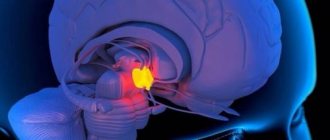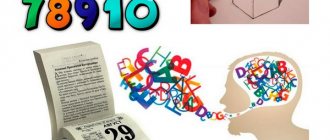Introduction
People can exchange different types of information at different levels of understanding. It is known that communication is not limited to oral or written messages. In this process, emotions, manners of partners, and gestures play an important role.
Psychologists have found that in the process of interaction between people, from 60 to 80% of communications are carried out through non-verbal means of expression and only 20-40% of information is transmitted using verbal
These data make us think about the importance of non-verbal communication for the mutual understanding of people, pay special attention to the meaning of human gestures and facial expressions, and also generate a desire to master the art of interpreting this special language that we all speak without even realizing it.
The peculiarity of non-verbal language is that its manifestation is determined by the impulses of our subconscious, and the absence of the ability to fake these impulses allows us to trust this language more than the usual verbal channel of communication.
The success of any business contact largely depends on the ability to establish trusting contact with the interlocutor, and such contact depends not so much on what you say, but on how you carry yourself. That is why special attention should be paid to the manner, posture and facial expressions of the interlocutor, as well as to the way he gestures.
Understanding the language of facial expressions and gestures allows you to more accurately determine the position of your interlocutor. By reading gestures, you provide feedback, which plays a decisive role in the overall process of business interaction, and the set of gestures is an important component of such communication. You will be able to understand how what you say is received - with approval or hostility, the interlocutor is open or closed, busy with self-control or bored.
Knowledge of body language and body movements allows you not only to better understand your interlocutor, but also (more importantly) to foresee what impression what you heard made on him even before he speaks out on this matter.
In other words, such wordless language can alert you to whether you should change your behavior or do something different to achieve the desired result. All this allows us to conclude that if you want to achieve certain results in relationships with partners, interlocutors or simply colleagues, then you need to master at least the basics of non-verbal, i.e. wordless communication.
advertising is not displayed
The purpose of this work is to consider the essence and main characteristics of nonverbal communications.
In accordance with the goal, the objectives of this work are:
- analysis of kinesic features of nonverbal communication;
- disclosure of proxemic features of nonverbal communication;
- study of visual contact in nonverbal communication;
- consideration of cross-national differences in nonverbal communication.
How to recognize truth and lies from a person
That’s why many people are interested in the details of our article - everyone wants to know how to read a person’s facial expressions, how to see when they are blatantly lying to you, and when they are telling the pure truth. Some ways to expose a liar are given below, but remember that, perhaps, the liar has known about such tricks for a long time, and therefore uses them skillfully and dexterously, deceiving others in such a way that a mosquito will not undermine his nose.
- When a person tells a lie, his pupils involuntarily constrict. If you have previously noticed the initial state of the interlocutor’s eyes, then you will understand that he is being disingenuous after the pupils become smaller.
- When a person lies, he looks away. This happens because he is subconsciously ashamed of the false information he says.
- When a person is lying and knows about the previous method, he looks intently into the eyes. Most often, he gets so “played” that he barely even blinks. This can also reveal a liar.
- The gaze of a lying person moves from one object to another, without stopping at one thing. Sometimes it's just a sign of nerves, but more often it's a sign of lies.
- Thanks to the compression of the zygomatic muscles, a kind of half-smile, half-grin appears on the face of the lying person.
- The direction of your gaze will also tell you whether you are hearing the truth or a lie from your interlocutor. If a person looks to the right, most likely, you are being presented with a lie, if to the left, the truth. However, this rule applies provided that the speaker is right-handed, otherwise read backwards.
How to recognize gestures?
In order to feel confident and comfortable in a situation of communicating with different people, to avoid manipulation, you should learn to recognize non-verbal language of communication in situations where they are trying to deceive you.
What means of nonverbal communication, gestures, postures, and facial expressions should you pay attention to in order to recognize a lie?
- excessively long or frequent pauses, pauses and hesitations before starting a line;
- asymmetry of facial expressions, lack of synchrony in the work of facial muscles, when there is a discrepancy in the facial expressions of the two sides of the face;
- a “frozen” facial expression, when it does not change for 5-10 seconds, is false;
- delayed expression of emotions, when long pauses arise between the word and the emotions associated with it;
- a “long” smile, where the lips are pulled back from the teeth, creating a narrow lip line;
- visual contact is shallow, when the liar's eyes meet the interlocutor's eyes for no more than a third of the entire conversation, while often looking at the ceiling and around with a restless expression on his face;
- twitching of any part of the body: tapping fingers on the table, biting the lip, twitching of arms or legs;
- scanty gestures that the liar keeps under control;
- high pitched voice, heavy breathing;
- bent body, crossed-legged poses;
- poor facial expressions, weak work of the facial muscles;
- quickly moving the eyes first to the upper right corner, and then to the lower left;
- quick, imperceptible at first glance, touching the nose, rubbing the eyelid;
- brighter gestures with the right hand compared to the left;
- any exaggeration: unnecessary movements and gestures, inappropriate emotions;
- frequent eye blinking
Knowing all the subtleties of non-verbal communication techniques, you will not only be able to avoid manipulation, but you yourself can easily learn how to manage people
The main thing that any student of body language strives for is the ability to detect lies in the speech of the interlocutor. They say about dishonesty:
- Frequently touching the face, scratching the forehead and nose, covering the mouth with the hand. A person literally tries to stop himself from telling a lie, to cover his face, avoiding a direct condemning gaze.
- Stroking, scratching the neck. Talks about lies caused by fear or misunderstanding. Such gestures are often demonstrated by subordinates when talking with their boss.
- Touching the earlobe. During communication, touching the ears means that the person does not believe in the information he heard, but tries not to show it.
- Quick, frequent smiles, licking lips. It means excitement, a desire to hide deception.
To get a complete picture of the correspondence of gestures and facial expressions to a person’s words, you need to evaluate the meaning of all movements:
- Gait. By the way the interlocutor enters the room, you can assess the degree of confidence and self-esteem: a long step, a confident gait - purposefulness and ambition, a shuffling gait - lack of will and aspirations, a slow, imposing gait - narcissism and demonstrativeness.
- Hand position while moving and sitting. Elbows pressed to the body indicate isolation, unsociability; broad gestures, waving your arms when talking - openness, sociability. Touching your interlocutor is a desire to enter the zone of closest trust, a desire to subjugate.
- Direction of view. The position of the eyes shows how interested the interlocutor is in the conversation and the desire to defend his point of view. A downward gaze means the person is telling the truth; an upward gaze means he makes it up as he goes along.
- Posture. A straightened neck and a raised chin indicate a person’s general confidence; a bowed head is a sign of humility and timidity.
- Body direction. A body leaning forward means interest in the conversation, sympathy for the interlocutor, a desire to reduce the emotional distance, and gain trust.
If a person often changes position during a conversation, his opinion is unstable. He is ready to accept someone else's point of view and submit to his interlocutor.
Gestures of closedness, isolation
For a full psychological assessment of a person based on body movements and gestures, it is necessary to distinguish between shyness and purposeful secrecy. He speaks about reluctance to communicate, fear and hostility:
- Crossing your arms over your chest. While sitting, a person can also cross their legs with their knee forward. This indicates a desire to fence off with armor, to be as far as possible from the interlocutor, distrust and hostility.
- Tightness, hands on knees. A defensive posture, the desire to quickly end the conversation.
- Stomping, tapping fingers, throwing objects from hand to hand. The desire to divert attention from oneself, to avoid a negative reaction.
For many people, secretive postures are comfortable, and they unconsciously adopt them when talking with trusted people. But during business communication they should be avoided so as not to cause misunderstanding.
Superwoman pose
And if you are nervous before a serious conversation or meeting, then try to calm yourself down with the help of the “super-woman” pose - sit straight, at the full depth of the chair, hands on your knees, back straight, shoulders relaxed and apart, chin high, gaze straight ahead. .
Take 15-20 deep breaths, imagining how stress is released from the body as you exhale, and feeling the stability of your posture. This exercise helps bring your parasympathetic nervous system back to normal (heart rate slows, breathing becomes more regular, sweating decreases, and you generally feel more in control).
Ready? Great, go into the meeting feeling confident and in the right position. And don't forget that your tongue may lie, but your body will still tell the truth.
Gestures. We expose the liar to “clean” waters
A person is lying or hiding something if he: ♦ while talking, hides his hands, fidgets, shows anxiety. At the same time, a man can loosen the knot of his tie, and a woman touches her neck with her hand; ♦ sometimes the opposite effect can take place: he sits and stands motionless, as if “petrified”; ♦ moves one shoulder; ♦ shrugs and usually quickly; ♦ often touches the interlocutor, wants to demonstrate his power; ♦ covers his mouth with his hand, keeps his hands constantly at his mouth or throat; ♦ crosses arms and legs, “goes into a closed position”; ♦ speaks and his speech does not match the tempo of his gestures. This is an exact liar; ♦ often touches his nose;
Interesting: a heartwarming story about a hawk ♦ rubbing his hands;
♦ fingers through various objects that come to hand; ♦ if possible, increases the distance from you; ♦ hides hands in pockets; ♦ licks his lips because lying makes a person’s throat dry. Also, there is reason to think about the sincerity of the interlocutor if, during his monologue:
- Begins to assure of his sincerity and truthfulness.
- Finds words with difficulty.
- Before speaking, he begins to hesitate.
- Repeats words or even sentences.
- Gives out unnecessary information and talks too much.
- Doesn't get to the main point for a long time.
- Becomes overly generous with praise and compliments.
This is interesting: A simple way to change yourself for the better!
Scientific research
Representatives of Ancient Rome already possessed the study of body language and the desire to characterize gestures. The science formed on the basis of the observations of researchers was called kenesics. The greatest contribution to its development was made by:
- J. Balwer. He created a fundamental work devoted to gestures, in particular, hand movements.
- I. F. Lavater. He studied physiognomy and conducted a comparative analysis of emotions and gestures.
- G. K. Lichtenberg. He published several works in which he examined Lavater’s ideas in detail, calling them superficial and far from reality.
- C. Bell. He studied the nervous system, studied the correspondence of facial features to the emotions experienced. He deduced a pattern between emotional reaction and muscular activity.
- C. Darwin. Studied the correspondence of facial expression to emotional reaction.
- F. Bacon. I came to the conclusion that there is a special body language that is understood by all peoples of the world.
- F. Lowen. In his book on the psychology of the body, he outlined the basics of psychosomatic problems
Psychologists and sociologists believe that body language can become a universal means of communication between people of different social groups.
Expressing affection using gestures
By studying body language and gestures, a person can easily understand interest in intimate and romantic relationships. The body movements of women who attract the attention of men are actively expressed:
- demonstration of the wrists, turning the inside of the palms up;
- shaking hair, twirling a curl on a finger;
- licking, biting lips;
- touching the thighs, ankles;
- pointing the toes of the shoes towards the man.
A man, showing interest in a relationship with a woman, subconsciously tries to demonstrate his best qualities:
- stretches up, straightens his shoulders;
- constantly adjusts his tie, cuffs and shirt collar;
- runs his hands over his thighs and knees.
In representatives of both sexes, interest in intimate relationships is revealed by a searching gaze. It glides along the figure of the attractive person from top to bottom, lingering at the neckline and hip level.
Nonverbal communication
Definition 2
Nonverbal communication is a system of signs and symbols that is used to convey a message and intended for its most perfect awareness, which to a certain extent does not depend on the psychological and socio-psychological properties of the individual, which has a fairly clear range of meanings and can be presented as a specific sign system.
People need non-verbal means of communication to clearly understand each other. Naturally, nonverbal manifestations relate only to oral communication. Since the external nonverbal expression of feelings and emotions performed by the body is also represented by a certain set of signs and symbols, it is often called “body language.”
Too lazy to read?
Ask a question to the experts and get an answer within 15 minutes!
Ask a Question
Nonverbal communication consists of two large groups: extralinguistic and paralinguistic means of communication.
Paralinguistic group:
- Prosody. This group is supposed to include components that complement speech. These are the timbre, strength and depth of the voice, the amount of expressiveness of articulation, stress, length and nature of pauses, etc. In other words, means of the prosodic level make it possible to impart a nuance to information by influencing the voice.
- Kinesics is a complex of body movements (gestures, facial expressions) that are used during human communication (excluding movements of the speech apparatus).
- Graphemics is a way of writing that conveys a person’s emotions and feelings. The manner of writing words and letters may change depending on the emotional background. So, say, an angry person presses his pen hard on the paper, but a thoughtful person may make mistakes and forget to complete the “hooks.”
Note 1
Paralinguistic means of communication cannot be used without reference to speech.
Extralinguistic group:
- Takeshiki is a non-verbal means of communication that is based on tangible signals transmitted by people to each other. These include kissing, hugging, patting, stroking, shaking hands and other communicative actions.
- Proxemics. Interlocutors in the process of interaction can be located at a distance or close to each other, deliberately or subconsciously exercising distance control. The method of organizing contact in space, which reflects the relationship of the interlocutors to each other, is called proxemics.
- Chronemics. Distribution of time during communication. A person may be in a hurry to get to a meeting, or he may put off the call. He can wait a long time for the interlocutor to become free, or he can reduce the contact time.
- Extralinguistics. Conveying emotions with the support of the voice, but without reference to speech. These means include dissatisfied rumbling, coughing, sighs, screams, etc.
- Sensory. Perception of the interlocutor using the senses. A person responds to the smell, the tenderness of the skin during touch and the visual perception of the interlocutor. There are also separate subgroups here. An example here would be olfactory means of communication (perception through smell) and phonation means of communication (hearing perception).
There is no need to learn non-verbal communication, as these are innate skills.
Reactions
Human facial expressions manifest themselves in different ways, and most often they can be seen in human emotions. The latter, in turn, are shown in reactions. Depending on their manifestation, you can find out what a person experiences from the information received. The difficulty is that some are afraid, others don’t want to, and still others are embarrassed to show their own emotions. Because of this, you will have to have time to notice the quick, involuntary reaction that appears very first. It is often almost impossible to completely control it, especially for an unprepared person. Therefore, you can determine the real feelings of your interlocutor, which he will most likely remove from his face in seconds, if you act quickly and extremely carefully.
Nonverbal communication what is it in psychology
Nonverbal communication is a type of communication without the use of words (through images, intonation, gestures, facial expressions). The tools for influencing a person are:
- sight;
- interpersonal space;
- optical-kinesthetic signals (facial expressions, appearance of the interlocutor, pantomime);
- peri-speech factors – vocal range, vocal qualities, timbre;
- extra-speech (laughter, speech rate, pauses).
For your information. Nonverbal methods of communication improve mutual understanding between people, allow you to predict the mood and attitude of the interlocutor towards the individual, and predict your own communication model.
The Origin of Nonverbal Communication
Nonverbal language has two types of origin: biological evolution and culture. Biologists have found that facial expressions when expressing emotions, most gestures and body movements in people are innate and serve as a signal for feedback. The biological nature of nonverbal communication is confirmed by elements not controlled subconsciously:
- paleness or redness;
- enlarged pupils;
- curvature of the lips;
- blinking.
Based on intentional and unintentional communication, there are 3 nonverbal means of communication:
- Behavioral factors. Caused by a physiological reaction: sweating from excitement, trembling in case of cold or fear.
- Unintentional means. Associated with people's habits (scratching temples, swinging legs, biting lips).
- Communication signals. Conveys brief information about an object, event, or state.
There are also universal signals known to everyone that are characteristic of a particular culture. Vivid examples are the style of behavior, dress code, and conventional signs of greeting and farewell.
Common “body signs”
Look and eyes
His eyes openly speak about a person’s inner experiences - it’s not for nothing that experienced “players” try to hide their expression behind the glasses of dark glasses.
People are usually extradited:
- any changes in the usual expression of the eyes - the emergence of a certain emotion, a signal of response to a stimulus;
- involuntary eye movements, noticeably “shifty eyes” - anxiety, shame, deception, fear, neurasthenia;
- a brilliant look - fever, excitement;
- glassy look - extreme weakness;
- enlarged pupils - a feeling of interest and pleasure from information, communication, photography, a partner, food, music and other external factors, acceptance of something, but also severe suffering;
- constriction of the pupils - a surge of irritation, anger, hatred, initial negative emotions, rejection of something;
- chaotic movements of the pupils are a sign of intoxication (the more such movements, the drunker the person);
- increased blinking - excitement, deception.
People always prefer to look at those they clearly admire, or those with whom they have close relationships, from a close distance;
Women show more visual interest than men. During communication, they most often look into the partner’s eyes when they listen, and not when they speak, although, when carrying out suggestion, they sometimes use direct gaze into the eyes at the moment of speaking the dialogue.
A person who looks you in the eye for noticeably less than one third of the entire communication period is either dishonest or trying to hide something; the one who openly persistently peers into your eyes, experiences increased interest in you (pupils are dilated), shows outright hostility (pupils are constricted) or strives to dominate.
Modifications of eye contacts have the following meaning:
- absent look - concentrated thinking;
- shifting your gaze to surrounding objects and to the ceiling - loss of interest in the conversation, an excessively long monologue of the partner;
- persistent and intent gaze into the eyes (pupils constricted) is a sign of hostility and a clear desire to dominate;
- persistent and intent gaze into the eyes (pupils dilated) is a sign of sexual interest;
- looking away and lowering your gaze - shame, deception;
- side view - distrust;
- the gaze then looks away, then comes back - lack of agreement, distrust.
The meaning of gestures and facial expressions using specific examples
Theoretical knowledge must be examined in specific, simulated situations. This is the only way to correctly understand what the interlocutor is “silent” about. Let's look at how the interlocutor's feelings are connected with the movements of various parts of his body.
Lips
Most often, self-confidence is associated with lip mobility.
Example 1.
The interlocutor, leaning his elbow on the armrest of the chair, rubs his lips with his index finger, without making a single sound.
This means that the person is confused and does not know what decision to make. The interlocutor thinks that they are trying to manipulate him, and his gesture is tantamount to uncertainty. This example is not frequent, but it is very eloquent.
Example 2.
The interlocutor’s tightly pressed lips ceased to be visible at all.
There are two options here:
This shows the person as virtuous, quite experienced, wise.
Disgust. Moreover, it is close to complete rejection. This is a more common option.
In this case, the context of the conversation is important. If during a conversation you mentioned something unpleasant or touched on some topic that was painful for the interlocutor, then this can be seen in his pursed lips. In this case, it is worth taking the conversation aside and changing the topic to a neutral one.
Example 3.
The interlocutor bites his upper or lower lip.
This means a person's dissatisfaction. Perhaps your interlocutor is exhausted and emotionally overloaded. If a woman bites her upper lip, she is usually afraid of something.
Also, this gesture can be considered as seduction, then it indicates amorous excitement.
Back
The back is the center of sensuality, also responsible for the ability to put maximum effort into something.
Example 1.
The interlocutor gave his friend a friendly slap on the back.
This is a direct expression of sympathy or just a good mood. They say it's a shortened version of hugging.
It is worth noting that this gesture does not always mean something good. Read part of the article about the ergonomics of gestures.
Example 2.
The interlocutor communicates with you with his back turned.
If men take this position, it indicates their inability to make decisions. This also indicates a lack of leadership qualities, because those who have them will openly meet any turn of the situation and resolve issues while facing their interlocutors.
Brushes
The hands are the most active and mobile part of the body; they can tell a lot.
Example 1.
If your interlocutor holds his hands in a “prayer” pose, then this means an irreconcilable gesture rather than a condescending one. You should be prepared for the fact that your interlocutor will object to what you said.
Example 2.
The interlocutor closes his hand, as if holding something small in it.
This gesture means that the person is only taking, not giving. This is a symbol of selfishness.
Jaw
The jaw is associated with anger in all its negative manifestations.
Example 1.
Does it happen that a person starts grinding his teeth in the middle of the night? So, this is not a habit or a feature of the body at all, it is nothing more than anger. Most often, a person who has experienced a very angry and dark situation during the day involuntarily manifests this at night through a dream.
Example 2.
The interlocutor's jaws are constantly in a hidden chewing process. This indicates a very changeable personality.
Example 3.
The veins seem to be pulsating under the skin, and tears are about to flow from the eyes. This is a sign that the interlocutor is clearly losing his composure, he is greatly shocked by something and is keeping his emotions to himself with all his might.
In the article we consider only basic examples; in addition to them, the psychology of facial expressions and gestures examines many situations and contexts.
Thanks to this knowledge, everyone has the opportunity to feel the essence of their interlocutor’s behavior, to understand what they are actually experiencing and feeling.
It’s unfortunate, but people tend to lie, hide something, or omit something. The psychology of facial expressions and gestures will help shed light and clarity on many situations; such serious knowledge can save you from trouble.
Gestures warning of aggression
It is important to recognize gestures of aggression and threats in a timely manner - this makes it possible to prevent a conflict in time and get away from the direct line of attack of the interlocutor. An aggressive attitude manifests itself:
- Clenching your fists. The interlocutor speaks in a calm tone, his posture is relaxed, but his hands are constantly clenched into fists - a clear signal of pent-up anger.
- Fists resting on the surface of the table, hips or pressed to the waist - a direct threat, readiness to attack.
- Hands hidden behind back. The person is literally trying to control himself and not show aggression.
- Pursed lips, tightly clenched jaws. They express contempt and dissatisfaction with the interlocutor.
- Scratching the back of the neck and the back of the head. Anticipation of attack, demonstration of readiness for defense.
If during a conversation a person twitches his upper lip, flares his nostrils, squints his eyes, he is ready for open confrontation, demonstrates superiority over his opponent, and threatens.
Male and female gestures
Men are less likely to express irritation through gestures. It’s easier to assess their mood through their posture: a relaxed posture speaks of trust, openness, and a desire to continue the conversation. Hunching, squeezing your shoulders, putting your hands in front of you is forming a kind of barrier from an unpleasant interlocutor.
A comparative description of the body language of a man and a woman shows that the gestures of the former are more closed, while the representatives of the fairer sex openly show their emotions and passion.
If a man likes a girl, he will demonstrate this with the following gestures:
- straightens clothes or hairstyle, brushes off dust, even if there is none;
- straightens your posture, stretches your stomach, and a bright look appears;
- keeps his hands in his pockets with his thumb facing out;
- has a searching look.
A woman will show her interest in a man as follows:
- straightening your hair, shaking your hair;
- hip swaying;
- look from under eyelashes;
- touching your thighs or waist;
- showing the wrist;
- stroking an elongated object with your fingers (pencil, stem of a glass);
- slightly open mouth, languid voice;
- throwing legs behind legs.
Girls have brighter body language. However, in case of self-doubt, the following gestures may appear: a trembling voice, loud laughter, angular movements.
Gait
Gait is the style of movement of a person. It can say a lot about its owner. For example, a heavy gait indicates a person is overwhelmed with thoughts and is depressed. Light, “flying” - about high spirits and optimistic thinking. A person who is hunched over, with his head down and shuffling his feet often turns out to be unsure of himself, while someone who is straightened up and with his chin raised moderately high has good self-esteem and is very confident in himself.
A person with an active lifestyle and prone to taking initiative walks confidently, with long steps and moderate swinging of his arms. People who are unsure of themselves most often hide their hands in their pockets or behind their backs. A thinking person walks slowly, as if tracking his every step. People walk with their chins high and their legs straight, trying to demonstrate their superiority over others.
Nonverbal communication
Nonverbal communication in psychology is called non-verbal communication, that is, communication using facial expressions, gestures, intonation, and body movements.
Knowledge of nonverbal language allows you not only to better understand your interlocutor, but also to find out his attitude to what was said even before he expresses it in words.
Thus, speechless communication performs the following functions:
- establishes contact between communicating;
- strengthen verbal expressions, enrich the communication process;
- express the emotional state of the interlocutor.
Nonverbal communication is of the following types:
- Kinesic. This is a unique set of gestures, poses, and facial expressions that must be interpreted unambiguously. These signs are an expression of a particular culture.
- Tactile signs. These are touches that are used in fairly close communication (friendly, loving, professional).
- Sensory perception. Communication is based on the perception of smells, tastes, colors, etc.
- Paraverbal communication. Involves the expression of voice timbre, intonation, and rhythm of speech when communicating.
- Proxemics. Communication is assessed in terms of the distance between interlocutors. Distance can be personal, professional and public.
In everyday communication, a person tries to understand his interlocutor, first of all, by gestures and facial expressions. The science that studies such communication is called physiognomy.
Expand your perception
Knowing the types of nonverbal communication and understanding nonverbal cues is important for several reasons. Firstly, they perform the function of accurately expressing feelings, because very often we experience feelings so complex that we are simply unable to find the right words to describe them, but this can be done using non-verbal means and methods. Secondly, they perform the functions of deeper mutual understanding.
Knowing the basic methods of nonverbal communication, you will be able to better understand and “see through” another person when he is trying to control his behavior when communicating with you, because nonverbal signals manifest themselves unconsciously and your interlocutor simply cannot control them. The classification of nonverbal means of communication and examples of their use will help you not only understand yourself better, but also teach you to recognize lies and manipulation from other people.
To learn to better understand your interlocutor and recognize his hidden signals, you must first learn to pay attention simultaneously to all elements or means of nonverbal communication, and nonverbal means of communication include facial expressions, gestures, postures, intonation and timbre of voice, visual contact and interpersonal space.
Let's talk in more detail about each of these elements of nonverbal communication and give specific examples of their manifestation.
Facial expressions
Facial expressions are the expression of a person’s face; they are the main element of displaying emotions and feelings. Positive emotions, such as love or surprise, are much easier to recognize than negative emotions, which include disgust or anger. Emotions are reflected differently on the right and left sides of the face, because the left and right hemispheres of the brain perform different functions: the right one controls the emotional sphere, and the left one is responsible for intellectual functions.
Emotions are expressed in facial expressions in this way:
- Anger - wide open eyes, drooping corners of the lips, “squinted” gaze, clenched teeth;
- Surprise - a slightly open mouth, wide open eyes and raised eyebrows, lowered tips of the lips;
- Fear - knitted eyebrows, stretched lips with downturned and downturned corners;
- Happiness is a calm look, raised, drawn back corners of the lips;
- Sadness - a “faded” look, drooping corners of the lips, knitted eyebrows.
Eye contact
This method of nonverbal communication helps to demonstrate interest in the conversation and better understand the meaning of what is being said. During a conversation, two people work together to create and regulate the degree of comfort by periodically meeting their gaze and looking away. Staring can either build trust or create discomfort.
Pleasant, general topics maintain eye contact, while negative, confusing questions cause you to look away, demonstrating disagreement and hostility. Features of visual contact allow us to draw conclusions about the degree of interest in the dialogue and attitude towards the interlocutor:
- Admiration – long eye contact, calm gaze;
- Indignation - a fixed, intrusive, somewhat alarming gaze, prolonged eye contact without pauses;
- Position – attentive gaze, eye contact with pauses every 10 seconds;
- Dislike – avoiding eye contact, “rolling” the eyes.
- Waiting - a sharp look into the eyes, raised eyebrows.
With visual contact, you can find out not only the attitude of the interlocutor, but also determine some character traits by eye color.
Intonation and timbre of voice
Correctly understanding the intonation and timbre of a voice means learning to “read between the lines” of another person’s message. Such features include frequent pauses, unfinished sentences and their construction, strength and pitch of the voice, as well as speed of speech.
- Excitement – low tone of voice, fast, choppy speech;
- Enthusiasm – high tone of voice, clear, confident speech;
- Fatigue – low tone of voice, lowering of intonation towards the end of a sentence;
- Arrogance – slow speech, smooth monotonous intonation;
- Uncertainty - mistakes in words, frequent pauses, nervous cough.
What is the psychology of facial expressions and gestures?
Facial expressions and gestures play a huge role in communicating with others. They help to strengthen and fully reveal feelings. With the help of facial expressions we express emotions that we do not talk about. Our body is very insidious; we may not notice how we say one thing, but our body language shows something completely different.
Without noticing it ourselves, we give away our hidden intentions and unspoken words. Our body is more eloquent than any speeches and tirades.
It will be difficult for an inexperienced person to figure out where and how his interlocutor lied. But those who are familiar with the topic of facial expressions and gestures are provided with an understanding of the situation and the opportunity to take control of it.
Facial expressions and gestures are very intertwined with each other, so they are always considered in one bundle.
We will do the same and in this article we will answer the most common questions on the topic of facial expressions and gestures.
Human facial expressions and gestures, psychology of influence! Read it, it will be interesting
Facial expressions
Facial expressions are various movements of the facial muscles and their combinations. It is quite weak to control; it is not always possible to restrain an impending smile or frowning eyebrows. With the help of facial expressions, a person can express a whole range of emotions without words: sadness, anger, joy, tenderness, surprise, delight, disappointment, bewilderment and others. More than other parts of the face, the eyebrows and mouth are involved in facial expressions.
There are people with well-developed ability to control their own facial muscles. It is sometimes not possible to correctly recognize their emotions or the veracity of information. They can enhance facial expressions or, conversely, restrain them. However, it is not always possible to completely control these processes during a conversation, so it is necessary to constantly compare the words and facial expressions of such people.










